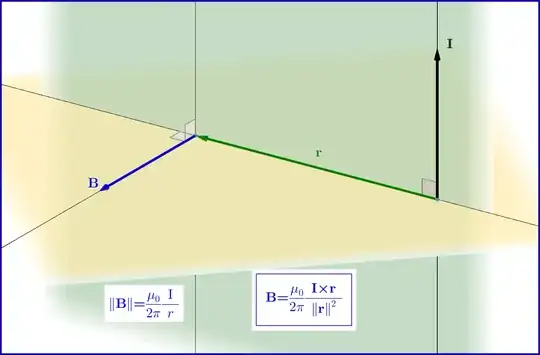This question is not a homework-exercises, but a request if exist a general formula of Biòt-Savart. We suppose that I have three or more wires traversed by incoming and outgoing currents and I would calculate the resultant of the magnetic field in a generic point of the space.
I have this example where I have a square and in the vertex there are the currents, where $r$ it is the half-diagonal of the square.
EDIT: Added new drawing after the comments of the user @G. Smith because the previous drawing it is not correct the direction and the verse of $\mathbf{B}_{24}$.
If I wanted to find the summation of the magnetic fields due from the 4 (four) wires, hoping that the drawn vectors of the magnetic fields are drawing correctly (if they are not correct or there is a different drawing, I am very happy to know my mistakes), I should to apply to each pair of wires (for example for $\mathbf{B}_{13}$) the relation:
$$\boxed{B_{13}=\frac{\mu_0 (+I_1+I_3)}{2\pi r}}$$ and $$\boxed{B_{24}=\frac{\mu_0 (+I_4-I_2)}{2\pi r}}$$ or $$\boxed{B_{24}=\frac{\mu_0 (-I_4+I_2)}{2\pi r}}$$
Why must I algebraically sum the values of the wire currents? Is there a general formula of Biòt-Savart for this?


